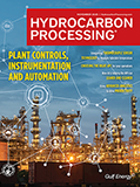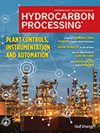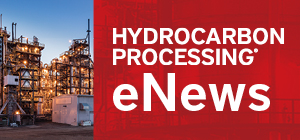South Korea to announce plan to restructure petrochemical sector facing 'grave' situation
South Korea's government will announce a plan this month to restructure the country's petrochemical sector, which is in a "grave" situation, Industry Minister Kim Jung-kwan said. South Korean petrochemical companies must take lessons from the restructuring of the country's shipbuilding industry in the late 2010s, when shipmakers had to liquidate assets and streamline business areas amid a sharp drop in orders, Kim said.
Margins have plunged for petrochemical companies in South Korea and across the globe due to an oversupply of products caused by relentless capacity additions in the last decade, particularly in China, the biggest petrochemical market. Demand has also been sluggish over the last three to four years.
"A restructuring in the petrochem industry has been highly expected, given the industry is running merely 80% of total capacity in Korea now - meaning we have about a 20% glut here," said Hwang Kyu-won, an analyst at Yuanta Securities Korea.
Kim, who was speaking at a shipyard, said the petrochemical industry needed to take voluntary measures, including the "adjustment" of facilities, his ministry quoted him as saying.
There have been concerns as well over the financial health of South Korea's loss-making Yeochun NCC Co (YNCC), a Yeosu-based petrochemical maker that local media says faces 180 billion won ($130 million) in loans coming due at the end of August.
South Korea's DL Holdings said in a regulatory filing on Thursday its subsidiary DL Chemical Co will issue a 150 billion won ($108.38 million) loan to YNCC, in which it holds a major stake. South Korea's government can use YNCC's travails as an opportunity for a large-scale restructuring in the industry, said the analyst Hwang.
Analysts do not expect global petrochemical margins to recover before 2027. The last major restructuring for South Korea's petrochemical industry was in 1999 during the Asian Financial Crisis, when YNCC was formed.
President Lee Jae Myung, who took office after a snap election in June, pledged during his campaign to pursue tax support for mergers and acquisitions in the petrochemical industry, and to exempt companies from antitrust regulations to allow more coordination of production and operations.
South Korea’s exports of petrochemical products stood at $21.7 billion in the first half of this year, down 11.1% from a year earlier, amid price declines and global oversupply. Total exports of petrochemical products were $48 billion in 2024, accounting for 7% of South Korea's total exports and a top-five export item after semiconductors, automobiles, machinery and petroleum products.
South Korea is one of the world's largest importers of naphtha, a derivative of crude oil that is refined into chemical products used in plastics for automobiles, electronics, clothing and construction. If the country is forced to cut capacity, it could impact global oil markets.
Other South Korean petrochemical companies besides YNCC are also seeing asset reshuffling.
HD Hyundai 267250.KS is looking to acquire Lotte Chemical’s naphtha cracker, or the companies may merge their cracker operations, trade sources have said.
Below are South Korea's top petrochemical producers based on the Korea Chemical Industry Association (KCIA).
Overview. South Korean producers have suffered losses due to oversupply, particularly in China, the biggest petrochemical market, and sluggish demand.
The country can produce about 13 million metric tons and about 11 million metric tons per year (tpy) of ethylene and propylene respectively, making it the world's fourth-biggest petrochemical producer, according to the KCIA.
It was also the biggest importer of petrochemical feedstock naphtha in 2024 at 652,000 barrels per day, data from analytics firm Kpler showed.
Major producers and production
LG Chem. Yeosu-based LG Chem is the top producer of ethylene and propylene, which are key plastic feedstocks used in industries from automobile to construction, with designed capacities at 3.380 million tpy and 1.980 million tpy, respectively. Its petrochemicals division recorded an operating loss of 90.4 billion won ($65.29 million) in second quarter.
Lotte Chem. The second-largest producer, Lotte Chemical, has an annual capacity of 2.330 million tpy of ethylene and 1.191 million tpy of propylene. The company has subsidiaries in Malaysia and a project in Indonesia. It sold a 25% stake in its Indonesian subsidiary, PT Lotte Chemical Indonesia (LCI), reducing ownership from 49% to 24%, and sold Lotte Chemical Pakistan earlier this year to strengthen its financial position and reduce debt. Lotte Chem reported an operating loss of 224.90 billion won in the second quarter.
YNCC. Yeochun NCC, a joint venture between DL Chemical and Hanwha Solutions 009830.KS, is the third-largest producer with a capacity of 2.285 million tpy of ethylene and 1.289 million tpy of propylene. DL Chemical will issue a loan of 150 billion won to YNCC to help pay debts due in August. YNCC reported an operating loss of 150 billion won in 2024, versus 239 billion won loss a year earlier.
Hanwha TotalEnergies. Hanwha has a joint venture with TotalEnergies called Hanwha TotalEnergies which can produce 1.525 million tpy of ethylene and 1.064 million tpy of propylene. It swung to an operating loss of 118 billion won in the first quarter, versus a profit of 51 billion won in the previous-year-period.
HD Hyundai Chemical. HD Hyundai Chemical can produce 850,000 tpy of ethylene and 451,000 tpy of propylene. It is either looking to acquire Lotte Chemical’s cracker, or the two companies may merge their cracker operations at the Daesan complex, trade sources have said. HD Hyundai said no decision had been reached. It reported an operating loss of 170 billion won for the second quarter, versus a profit of 560 million won a year earlier.
KPIC. Korea Petrochemical Ind. Co., Ltd (KPIC) can produce 900,000 tpy of ethylene and 560,000 tpy of propylene at Ulsan. KPIC swung to an operating loss of 4.5 billion won in the second quarter, after reporting a profit of 53 million won a year earlier.
GS Caltex. South Korea's No. 2 refiner GS Caltex can produce 900,000 tpy of ethylene and 970,000 tpy of propylene at its Yeosu complex. Its petrochemical business recorded an operating loss of 53 billion won in the first quarter, widening from a loss of 1 billion won in the prior-year period.
SK Geocentric. SK Geo Centric, a subsidiary of SK Innovation which owns the country's top refiner SK Energy, can produce 660,000 tpy of ethylene and 380,000 tpy of propylene. SK Group has halted SK Geocentric's plan to build a plastic recycling complex in Ulsan, according to local media reports.
S-Oil. South Korea's third-largest refiner S-Oil 010950.KS can produce 182,000 tpy of ethylene and 840,000 tpy of propylene at Ulsan. Adding to oversupply worries, S-Oil is developing a 1.8 million tpy ethylene plant with its majority owner Saudi Aramco. The Shaheen project, Aramco's largest investment in South Korea, is on track for completion in 2026, Aramco said in its second-quarter earnings announcement. S-Oil reported an operating loss of 344 billion won for the second quarter, versus 161 billion won in profit a year earlier.






Comments